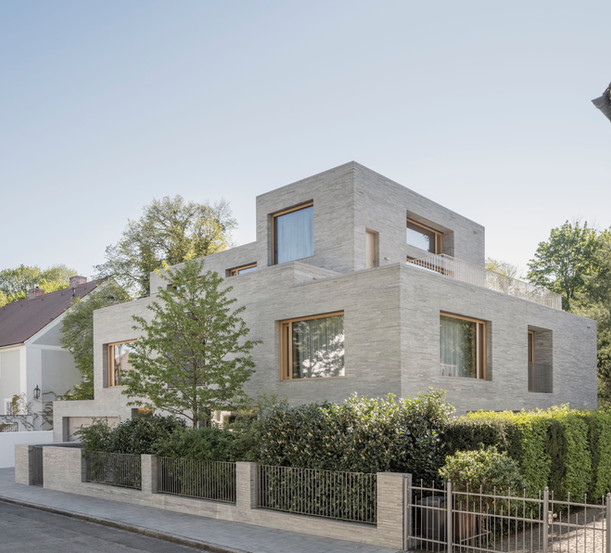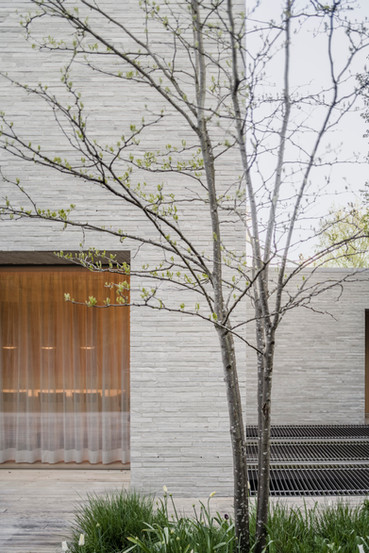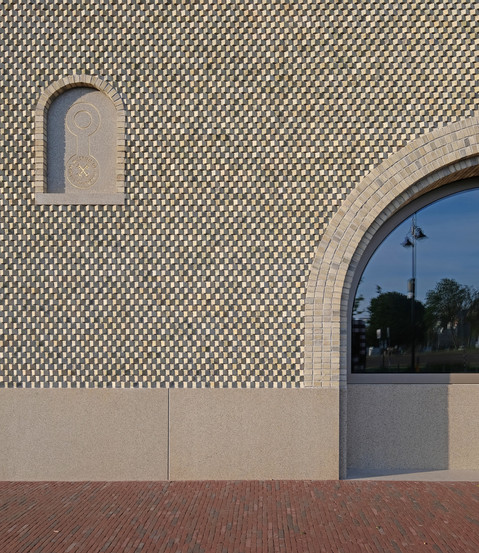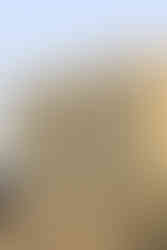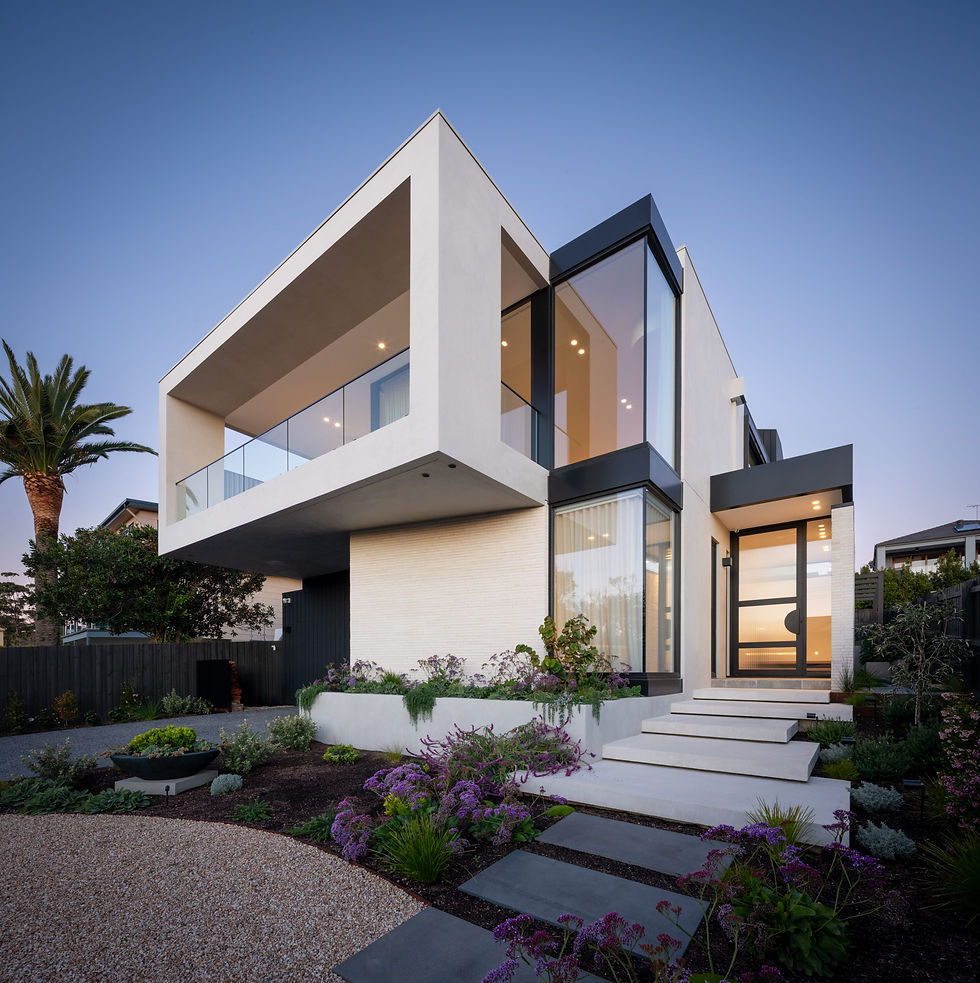The multiple (Fritz Höger Award-winning) faces of Petersen bricks
- Belinda Findlay
- Nov 22, 2021
- 5 min read
Updated: Jul 22, 2024
It was no great surprise, but a great delight, for our team to learn earlier this year that Petersen bricks featured in four of the winning 2020 Fritz Höger Award projects for Brick Architecture, announced in Berlin.
This internationally-renowned architecture prize honours architects and planners who achieve outstanding accomplishments in brick construction by using this traditional building material in a future-focused manner. The competition looks for projects that have building shells with not only impressive brick architecture, but also add value in economic, ecological, design or functional ways.
The Award is presented every three years by the Brick Building Initiative and supported by the Association of German Architecture, its partner since 2011.
Out of an initial pool of 586 contenders and a shortlist of 71, Petersen bricks featured in the following four awards, across three categories, demonstrating the many and varied faces, and wonderful tones and textures, of these beautiful handcrafted bricks.
DETACHED HOUSE / SEMI-DETACHED HOUSE
SILVER AWARD: House by the English Garden, Munich, Germany
A commentary on this spectacular house from Axel Baudendistel:
"The independent style of this house emerged from the ambition to merge the primary lines of action from urbanism, natural space and interior connections into a coherent building. Finely detailed and precisely joined, long-format Petersen Kolumba™ bricks give the archaic building a handcrafted, timeless beauty.
Located next to the English Garden, this house is constituted by the discourse of contextual references to the street space, diverse interior relationships and their interlocking with the internal structures of the adjacent natural space.
Precisely constructed, the style is ruinous and archaic, as well as timeless. Handmade Petersen Kolumba™ bricks and large, solid oak windows lend the sharply cut forms and façade surfaces scale and a particularly sensual, tactile and handcrafted presence through their nuanced light and shadow gradients.
At the same time, the long-format stone succinctly clads and protects the multi-layered, modern wall construction and contrasts with the warm tones and surfaces inside the building. Solid, fortified, expansive, muscular on the outside. Sheltering, labyrinthine, playful and soft on the inside. Complementary dispositions whose supposed contrasts create tension and allow the components to flow together into a coherent whole. Here, the architecture merely forms a kind of film - a picture mount for the everyday.”
And, a telling comment from Baumstark Bielmeier architects, sums up their love of Petersen bricks: "We appreciate the bricks due to their exquisite simplicity and solid, timeless beauty."
Architect: Baumstark Bielmeier with Axel Baudendistel
Product: Petersen K51 bricks
Images: Florian Holzherr
NOMINEE AWARD: Stylepark New Building at Peterskirchhof, Frankfurt am Main, Germany
In the centre of Frankfurt Am Main, a new three storey building is perched on top of a listed graveyard wall, adding another layer to the local history. The new architecture is cubic and sculptural, housing the offices of Stylepark–an online platform for architecture and design products–on the ground floor and two apartments on the upper floors.
The building has its own distinctive idiom, which is simultaneously serene and sculptural, taking account of the neighbouring buildings, its various functions and particularly the inflow of light.
The materials used are simple, but combine to produce striking textural effects – bricks, oiled larch wood and windows framed in bronzed aluminium. Petersen D46 bricks in three different formats – Hamborg, Flensborg and Danish standard – bring visual variation to the brickwork by alternating, seemingly at random, between thinner and thicker layers. “We wanted to integrate into the architecture the idea of difference layers of time,’ says architect Kerstin Berganski, NKBAK. “The layers are varied and we have to take into account openings and lintels to make the bricks fit.”
“Brick is a very complex material,” says Andreas Krawczyk, NKBAK, “It offers so many opportunities – not only in terms of the dimensions, but also when making decisions regarding the joints, the different layers, the format. It’s only by understanding how the material works that we can transform bricks into a modern building.
Architect: NKBAK
Product: Petersen D46 in three formats
Images: Thomas Mayer
More info: Petersen Magazine 41, 2019, pages 14-15
OFFICE AND COMMERCIAL BUILDINGS
BRONZE AWARD: Johann Jacobs House, Bremen, Germany
The new Johann Jacobs House replaces the former head office of the coffee company Jacobs as a
project of the inner city development in Bremen. Together with the historic weigh house from the
Weserrenaissance in the second row, it forms an ensemble, surrounding a new little square with a
Café.
This elegant contemporary “Bremish” Townhouse refers to several historical architectural elements. naturally integrated into Bremen’s urban structure of townhouses. However, the building’s unique aspect is that is has three sides. The volume steps back towards the upper part, creating precise references to the different scales of its surrounds on three sides.
Generous windows and floor heights, and daylight from three sides, provide attractive contemporary sales areas on the ground floors and offices on the upper floors.
Referring to Hanseatic warehouses, access and construction are reduced to the essential. The steps of the outer walls serve as wall-high carriers that span the open large rooms. The column-free structure offers flexibility in the long term and characterises the appearance of the house and its
volumetric figure.
Architect: Felgendreher Olfs Köchlin Product: Petersen D48 brick DNF
Images: Rainer Rehfeld
PUBLIC BUILDINGS, RECREATION and SPORT
NOMINEE AWARD: Extension and renovation of Lakenhal Museum, Leiden, the Netherlands
With simple, powerful effects and a sense for history’s many layers, almost 400 years of architecture have been woven together in the restored and expanded museum de Larkenhal. Carefully attuned to the hues and textures of the existing buildings, the new facades’ greyish-yellow bricks create fine patterns inspired by textiles.
The ornamental possibilities of a brick are in full bloom in the museum’s new extension–the Van Steijn building–a separate building rising four storeys above its neighbours. The façade is built up as a shouldered posture with a wider base with large brick archways and a slightly narrower three-storey superstructure, marked by four recurring, tapered bay windows.
Architects Happel Cornelisse Verhoeven worked closely with Petersen Tegl to develop the 13 different moulded bricks needed for the brickwork. “We used brick in the expansion, which echoes the historic buildings, but in a modern way,” says architect Ninke Happel. “Along with polished concrete, dark oak and brass, the bricks form a palette of materials that binds the buildings together across time,” Happel continues.
“We wanted to create a building without an additional area of ornamentation, but which is ornamental in material application. We chose to create a sawtooth pattern of moulded brick, angles at 30 degrees, each brick with almost the same shape as a small house,” says Happel. This north façade gets morning and evening sun so the relief in this sawtooth pattern beautifully captures the light.
Architect: Happel Cornelisse Verhoeven
Images: Paul Kozlowski
More info: See Petersen Magazine 42, 2019, pages 2-5
Heartfelt congratulations go to all architects involved on these outstanding achievements, and of course the incredible Petersen Tegl team who continues to deliver bricks with a natural richness of colour and tactile qualities that enable our clients to create inviting spaces and distinctive elements in their designs. As you've seen across our social posts this year, these are truly remarkable projects.


